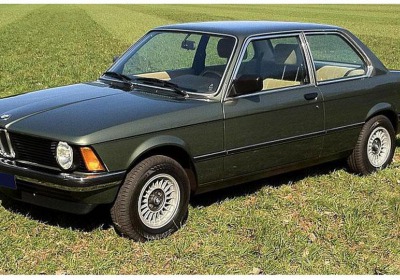Evolution of the 3: BMW begins sales of sixth-generation sedan
Fri, 13 Jan 2012
BMW staged the U.S. launch of the sixth generation of the stalwart 3-series at the Detroit auto show this week, which makes this as good a time as any to take a look back at the car that other sports sedans aspire to be.
The small sedan hit the scene in 1975, just three years after the 5-series, as a successor to the BMW 1600, the 1600ti and the 2002. It was characterized by large windows, short overhangs and a low-slung appearance. It was fronted by the company's signature double-kidney grille. The E21, as it was known internally, had engines ranging from 1.6 liters to 2.3 liters in displacement. The top model made 141 hp and had disc brakes all around.
In 1982, the second generation debuted with redesigned sheetmetal and optimized aerodynamics. Track width was increased, and dual headlights became standard. The E30 was sold until 1993 with a selection of four- and six-cylinder engines ranging from 121 hp all the way up 192 hp in the 1989 M3.
In the early 1990s, the third generation debuted. It was larger and rounder than its predecessors. The double headlights were mounted together behind glass on each side of the grille. The third generation had almost nothing in common with the previous model but was easily recognizable as a BMW. Power came from a selection of four- and six-cylinder engines ranging from 111 hp to 190 hp. The third-generation M3 topped the 300-hp barrier for the first time with 317 ponies from the 3.2-liter inline six-cylinder engine.
The fourth generation grew even more, adding nearly two inches to the width and nearly three inches to the track. The grille was integrated into the hood. Compared with the 5- and 7-series, the lower headlight surrounds formed a distinct look. Output increased to 235 hp for the non-M models while the M3 CSL made 355 hp.
In 2005, the fifth generation launched--it was the most powerful series to date. It was awarded World Car of the Year honors in New York. Internally named the E90, power ranged from 215 hp in the 325i to 444 hp in the M3 GTS.
The new BMW 3-series, introduced to North America in Detroit, promises to be more efficient, with the lowest coefficient of drag in its history. A four-cylinder engine was introduced with 240 hp and 255 lb-ft of torque. Top models stay with the twin-scroll turbocharged I6 making 300 hp. The dual headlights with LED eyebrows extend all the way to the kidney-grille frame. The 3-series sports two large air intakes located below the headlights.
BMW has done well over the past 35 years to improve the 3-series while keeping it recognizable as the company's bread-and-butter sedan.
By Jake Lingeman

